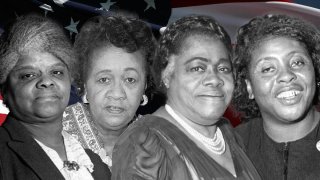
Ida B. Wells was in Washington, D.C., in 1913 for a parade of the National American Woman Suffrage Association when she learned that white organizers wanted Black women to march at the back so as not to upset Southern delegates.
Wells, who was representing the Alpha Suffrage Club, the first Black suffrage club in Chicago that she had founded two months before, wasn't having it.
“Either I go with you or not at all,” said Wells, also a founder of the National Association for the Advancement of Colored People. “I am not taking this stand because I personally wish for recognition. I am doing it for the future benefit of my whole race.”
Wells ignored the directive from leading suffragist Alice Paul, waited until the parade began and joined the all-white Chicago delegation as it marched by.
Get top local stories in Connecticut delivered to you every morning. Sign up for NBC Connecticut's News Headlines newsletter.
"She believed in herself and had visions of how things could be that other people didn’t see,” Michelle Duster, Wells’ great-granddaughter said. “What inspires me is her level of conviction in herself and her own sense of self.”
Wells and thousands of other African American women fought fiercely for the passage the 19th Amendment, giving women the right to vote, but they did not gain the same benefit as white women after its ratification on Aug. 18, 1920.
They did however lay the groundwork for African American women like Stacey Abrams, Rep. Ayanna Pressley of Massachusetts and Michelle Obama, who continue to battle voter suppression today. And they paved the way for Vice President Kamala Harris, the first Black and Indian American woman to hold the position.
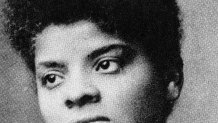
Wells, born into slavery during the Civil War and legendary for her pioneering investigative reporting and anti-lynching activism in the South, was an outspoken advocate throughout her life for Black women’s right to vote — a fight that did not end in 1920.
U.S. & World
Like the suffrage parade of 1913, the 19th Amendment was tainted by racism, and its legacy is more complicated than what core history classes teach. For decades afterward, many Black women were kept from the polls through physical violence and intimidation. Poll taxes, literacy tests, and other practices common in Southern states were not prohibited in federal elections until the mid-1960s with the 24th Amendment and the Voting Rights Act.
As the country celebrates Black History Month, the legacy of women such as Wells is especially relevant. Black women and others are fighting restrictions that many charge are nothing but new ways to prevent people of color from voting, among them requirements for voter IDs, the purging of voter rolls and the closing of polling places.
“Well, we know that they are deployed strategically and unevenly to disproportionately keep women and people of color from the polls,” said Martha Jones, professor of history at Johns Hopkins University who calls the story of the 19th Amendment the story of voter suppression.
A century after the ratification of the 19th Amendment, these new laws are mimicking ones in place then, she said.
African American Women Suffrage Pioneers
Black women were among the pioneers in the women's rights movement, said Jones, the author of “Vanguard: How Black Women Broke Barriers, Won the Vote, and Insisted on Equality for All.” Maria Miller Stewart, for example, in 1832 became the first American woman, Black or white, to give a public speech about abolitionism and women’s rights to a group of men and women in Boston.
“Long before women’s conventions became regular occasions, Stewart broke that barrier,” Jones wrote.
But when Susan B. Anthony and Elizabeth Cady Stanton, the giants of the suffrage movement, wrote the “History of Woman Suffrage” in the 1880s, they focused on white women activists and largely ignored the contributions of many Black women who worked as abolitionists, attended suffrage meetings, organized suffrage clubs and promoted women’s rights in the U.S.
The late African American historian Rosalyn Terborg-Penn challenged that narrative in her field-defining book in 1998. In “African American Women in the Struggle for the Vote, 1850-1920," she identified more than 120 Black women and wrote about “hundreds of nameless black women” who fought for voting rights but who did not receive the recognition they earned.
The first known African American suffragist and among the most famous was Sojourner Truth. In 1851 she gave a speech at the national women’s rights convention in Akron, Ohio, even though some white women tried to stop her. After the Civil War, she attended meetings of the American Equal Rights Association where she called for the vote for both Black men and for women.
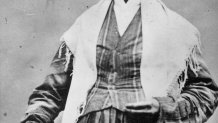
Sarah Remond and her brother Charles came from a noted abolitionist family, and in 1858 gave pro-suffrage speeches at the National Woman’s Rights Convention in New York City, according to Terborg-Penn. Sisters Margaretta Forten and Harriet Forten Purvis helped to establish the interracial Philadelphia Suffrage Association in 1866 and were active in the American Equal Rights Association.
The Rift In The Suffrage Movement
After the Civil War ended in 1865, the women’s rights movement splintered over the issue of voting rights for Black men. Upper-middle-class white women wanted the same rights as white men but Black women saw the right to vote as protection against racial oppression for all Black people. Truth and Frances Ellen Watkins Harper, poet and anti-slavery lecturer, urged white suffragists to resist divisions within the movement.
They were “visionaries because they’re the ones who said these divisions just don’t hold, they don't work. Why? Because Black women are both women and they are Black," Jones said.
In her address at the Eleventh National Women’s Rights Convention in New York City in 1866, Harper said, “We are all bound up together in one great bundle of humanity, and society cannot trample on the weakest and feeblest of its members without receiving the curse in its own soul. You tried that in the case of the Negro. You pressed him down for two centuries; and in so doing you crippled the moral strength and paralyzed the spiritual energies of the white men of the country.”
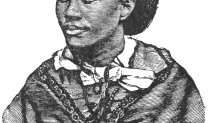
Truth and Harper did not succeed. Elizabeth Cady Stanton and Susan B. Anthony severed ties from the American Equal Rights Association and formed the National Woman Suffrage Association, insisting that Black men should not receive the vote before white women. Lucy Stone and Julia Ward headed the new American Woman Suffrage Association, which supported both Black suffrage and women’s suffrage. Black women continued to be active in both organizations.
In 1870, Black men gained the right to vote when the 15th Amendment was ratified, infuriating white women like Anna Howard Shaw, president of the National Women Suffrage Association. She said at the time, “Never before in the history of the world have men made former slaves the political masters of their former mistresses!"
The two suffrage organizations reconciled in 1890 to form the National American Woman Suffrage Association. Black women remained committed suffragists but did not wait for white women to address the racism they and their communities faced and created their own organizations.
African American Women Organize
“In the midst of those very fraught politics after the Civil War, Black women see the big picture, they see the long game,” Jones said. “They know where they're going to end and unfortunately, Stanton and Anthony will give in to anti-Black racism and they will taint their movement forever.”
In 1871, African American activist Mary Ann Shadd Cary and 63 other women, Black and white, tried to vote in Washington, D.C. The women were unsuccessful but they convinced officials to sign documents proving they had tried. Five years later, Cary asked the National Woman Suffrage Association on behalf of 94 Black women that their names be enrolled in the July 4 autograph book as signers of the 1848 Woman’s Declaration of Sentiments, which demanded the immediate enfranchisement of American women, according to Terborg-Penn. Their names were never added.
Josephine St. Pierre Ruffin, a Black journalist from Massachusetts, edited the Woman’s Era, the first newspaper published by and for African American women, where she challenged the opposition to women's suffrage in Boston, according to Terborg-Penn. She was personally discriminated against when seeking to represent her club at the 1900 convention of the General Federation of Women’s Clubs, leading to the virtual segregation of Black and white women’s clubs, according to Terborg-Penn's research.
In 1896, Wells and other Black women established the National Association for Colored Women (NACW). It was considered to be the first national African American Civil Rights organization and "it swelled to twenty-eight federations and over a thousand clubs and boasted membership that was fifty thousand strong," historians Daina Ramey Berry and Kali Nicole Gross wrote in their book, “Black Women’s History of the United States." Black women also fought for female suffrage through clubs created within churches and founded Greek-letter organizations such as the Alpha Kappa Alpha sorority in 1908 and Delta Sigma Theta in 1913.
"The NACW helped organize masses of Black suffragists who started voter-education clubs, created and submitted petitions, and volunteered on local campaigns," Berry and Gross wrote.
Mary Church Terrell served at the first president of the NACW. She was a suffragist who maintained relationships with white suffragists and was a great admirer of Susan B. Anthony, but she did most of her work through NACW, Jones said. Hallie Quinn Brown followed in Turrell’s footsteps as president of NACW and led “Black women into the politics of the post 19th Amendment era,” according to Jones.
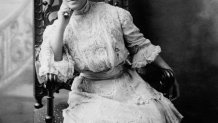
1920 is Not The End of the Fight for Vote
The year 1920 marked "the beginning of a new movement for voting rights that Black women along with their male counterparts, have to wage in order to defeat the Jim Crow laws that kept Black women from the polls," Jones said. "For Black women, the 19th Amendment was not the end of the struggle for voting rights, it marked a new beginning."
After the passage of the 19th Amendment, some Black women tried to register to vote and were successful and “those successes, even though few in number, inspired fresh efforts to suppress Black voters,” according to Liette Gidlow, associate professor of history at Wayne State University in Detroit, who is working on a new book, “The 19th Amendment and the Politics of Race, 1920 —1970.”
When "disfranchised Black women asked the League of Women Voters and the National Woman's Party (NWP) to help, the main organizations of former suffragists turned them down," Gidlow wrote in an article. "NWP head Alice Paul insisted in 1921 that Black women's disfranchisement was a ‘race issue,’ not a ‘woman's issue,’ and thus no business of the NWP. The failure of white suffragists at that moment to address the disfranchisement of southern Black women reverberated for decades to come and undercut the efforts of women of both races to make progress on issues of shared concern."
Black women continued to develop political power in the face of disenfranchisement, racism and sexism. Mary McCleod Bethune founded a school for Black children in Daytona, Florida in 1904 and became one of the most important Black educators, women’s rights leaders and government officials. In 1922, she organized hundreds of women to vote in a mayoral election in Daytona. The night before that election, the Ku Klux Klan marched through the school grounds and she “stood them down," Gidlow said.
“The next day, she took five hundred African American women to the polls with her in support of a mayoral candidate who was supportive of her agenda to improve educational opportunities for African Americans,” Gidlow said. “She worked as an individual. She worked as a community leader, and she worked as an organizer on a national level to boost voting rights.”
Bethune played a pivotal role in the transition of Black voters from the Republican Party to the Democratic Party during the Great Depression, Gidlow said. In 1936 she became the highest-ranking African American woman in government when President Franklin Roosevelt named her director of Negro Affairs of the National Youth Administration.
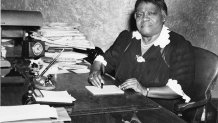
The Struggle For Votes And The Civil Rights Movement
Black women fought for voting rights against the backdrop of lynchings, intimidation and sexism. They were instrumental to the Civil Rights Movement of the 1960s but their contributions were overshadowed by well-known African American male leaders such as Martin Luther King, Jr. and Medgar Evers. Black women such as Septima Clark, Pauli Murray, Ella Baker, Fannie Lou Hamer, Dorothy Heights and countless others played more than incidental roles; they were key organizers and activists.
Septima Clark was a member of the NAACP and a teacher who became director of education for the Southern Christian Leadership Conference. In the 1950s she advocated for the integration of public schools, activism that affected her career, Gidlow said. In 1956, after the Supreme Court's Brown v. Board of Education decision desegregated education, Clark lost her teaching job and access to her pension because she did not comply with a South Carolina law that banned members of the NAACP from teaching. Clark designed educational programs to teach African Americans how to read and write so they could register to vote in the South.
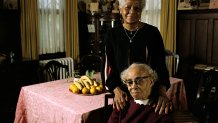
Black women of the Civil Rights Movement “didn't become figures who were as visible as some others, such as Reverend King, but their work was essential,” Gidlow said. “And people within leading civil rights groups and local organizations understood that their work was essential. They had connections into communities that could be mobilized for voting rights...It was their influence, it was the strength of their ties to family members and neighbors and coworkers that inspired people to put themselves at risk in order to advance these causes.”
Murray was a lawyer, civil rights advocate and an Episcopal minister. In 1943 she organized and led the early student sit-ins that desegregated restaurants in Washington, D.C., according to Jones. She worked with Black and white church women to compile the first full chronicle of the Jim Crow laws in the United States.
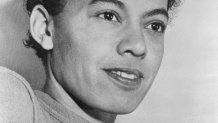
Baker was a close associate of the Kings, and in 1960, organized the founding meeting of the Student Nonviolent Coordinating Committee, "working to cultivate leadership among college students who were already taking leadership roles by working to desegregate lunch counters in the South," according to Gidlow.
Hamer worked for the Student Nonviolent Coordinating Committee and to register voters in Mississippi. In 1963 she was brutally beaten after being jailed for voter education and desegregation efforts when she was returning from a voter education conference, Gidlow said. She went on to help found the Mississippi Freedom Democratic Party, which cast itself as an alternative to the white and conservative Democratic Party.
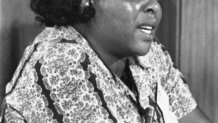
Height was inspired by Bethune to work with the National Council of Negro Women, and in 1957, became its fourth president, serving in that role for 40 years. Under her guidance, the council supported voter registration in the South and provided financial assistance to civil rights activists throughout the country, according to an article published by the National Women's History Museum. Height, along with other civil rights activists, organized the March on Washington for Jobs and Freedom in 1963 but she was not asked to speak.
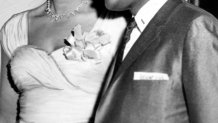
Ida B. Wells' great-granddaughter thinks her great grandmother would be happy with the progress Black women have made but also see that their job is not finished.
"We’re not only voting, we’re also politicians," said Duster, who's working on a book, "Ida B. the Queen. The Extraordinary Life and Legacy of Ida B. Wells." "...Maybe on some level, she’d be disappointed that three or four generations after her, we’re facing the same struggles that are manifested in a different way. Some of the violence that she’s lived through, involved thousands of people showing up to lynchings. We don’t have these spectacles, but now there are millions of people across the world viewing the killings of Black people by police on social media."
EDITOR'S NOTE: A version of this article first appeared on August 17, 2020, to commemorate the centenary of the passage of the 19th Amendment.



